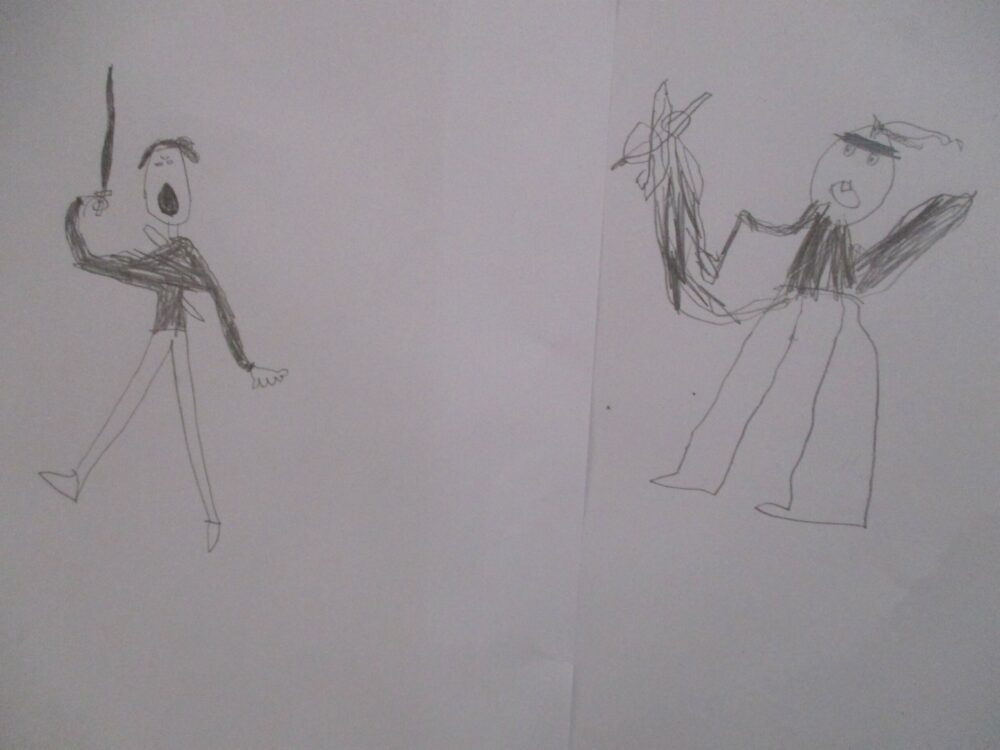Exploring Macbeth Through Art: Macbeth Portraits
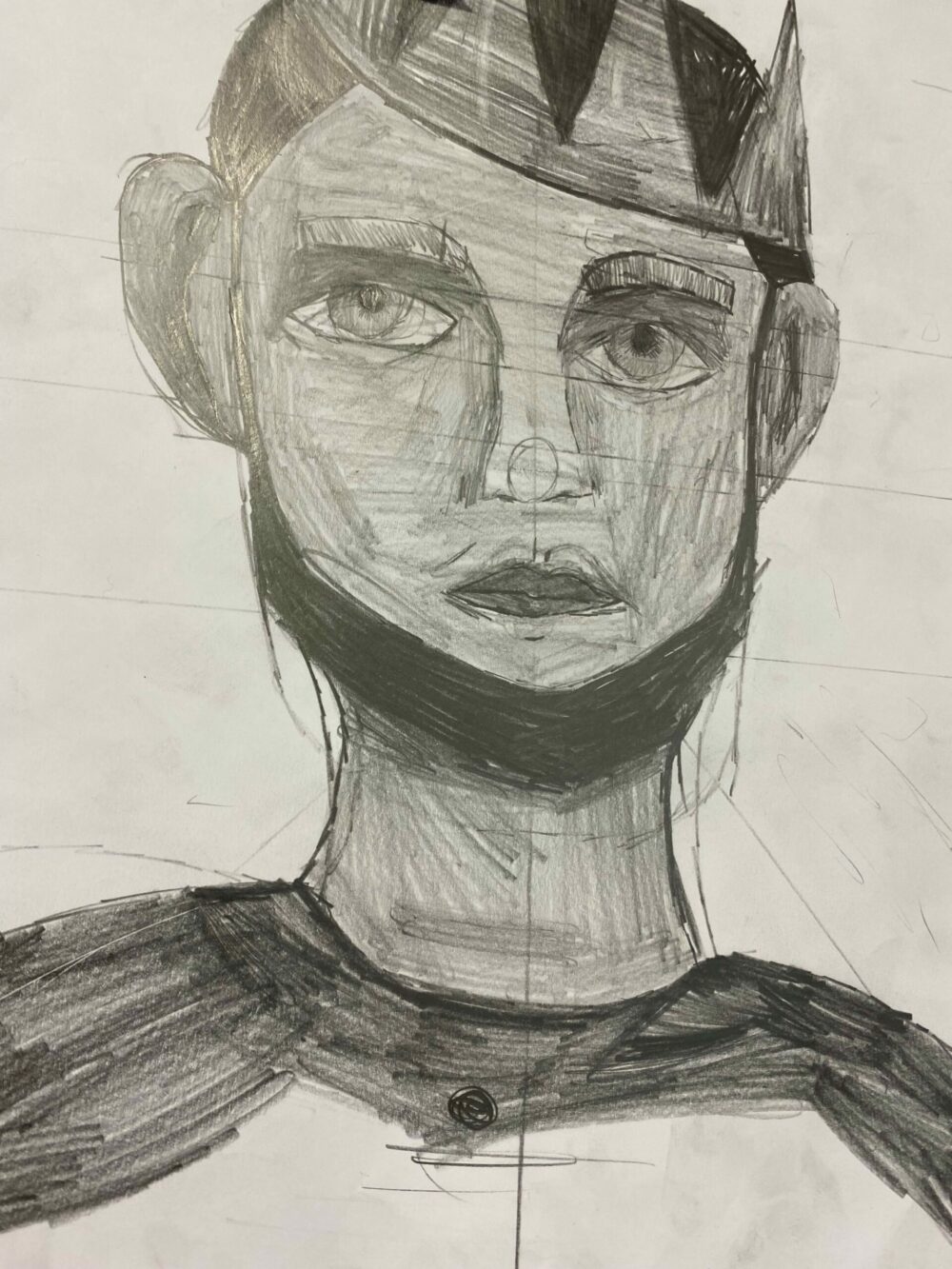
In this third of six resources on Shakespeare’s Macbeth, children are invited to look closely at Macbeth and the witches – and the role they plays in the story. You can find the full Macbeth resource collection here.
The aim of the session is to practice drawing from life, before working towards a portrait of Macbeth and one of the witches that shows character through posture. We recommend leaving the finer details and approach open for the children to interpret.
Back to all six sessions here.
Session 3: Macbeth portraits
Warm Up: 15 minutes
Main Activity: 45 minutes
Materials Needed: A3 or A2 sheets of cartridge or sugar paper, pencils, your witch capes from session 2
Focus Theme/s: Courage/Ambition, Appearances Vs Reality, Order and Disorder
Time to Warm Up! Look Up Not Down Portraits.
This exercise helps participants understand the importance of looking, and it also encourages participants to lose their inhibitions about their drawings.
Working in pairs, make drawings of each other with the challenge of only looking at your partner, and NOT looking at the paper!
You will need a couple of pieces of A3 paper and a drawing pencil for this activity. Partners should sit opposite each other.
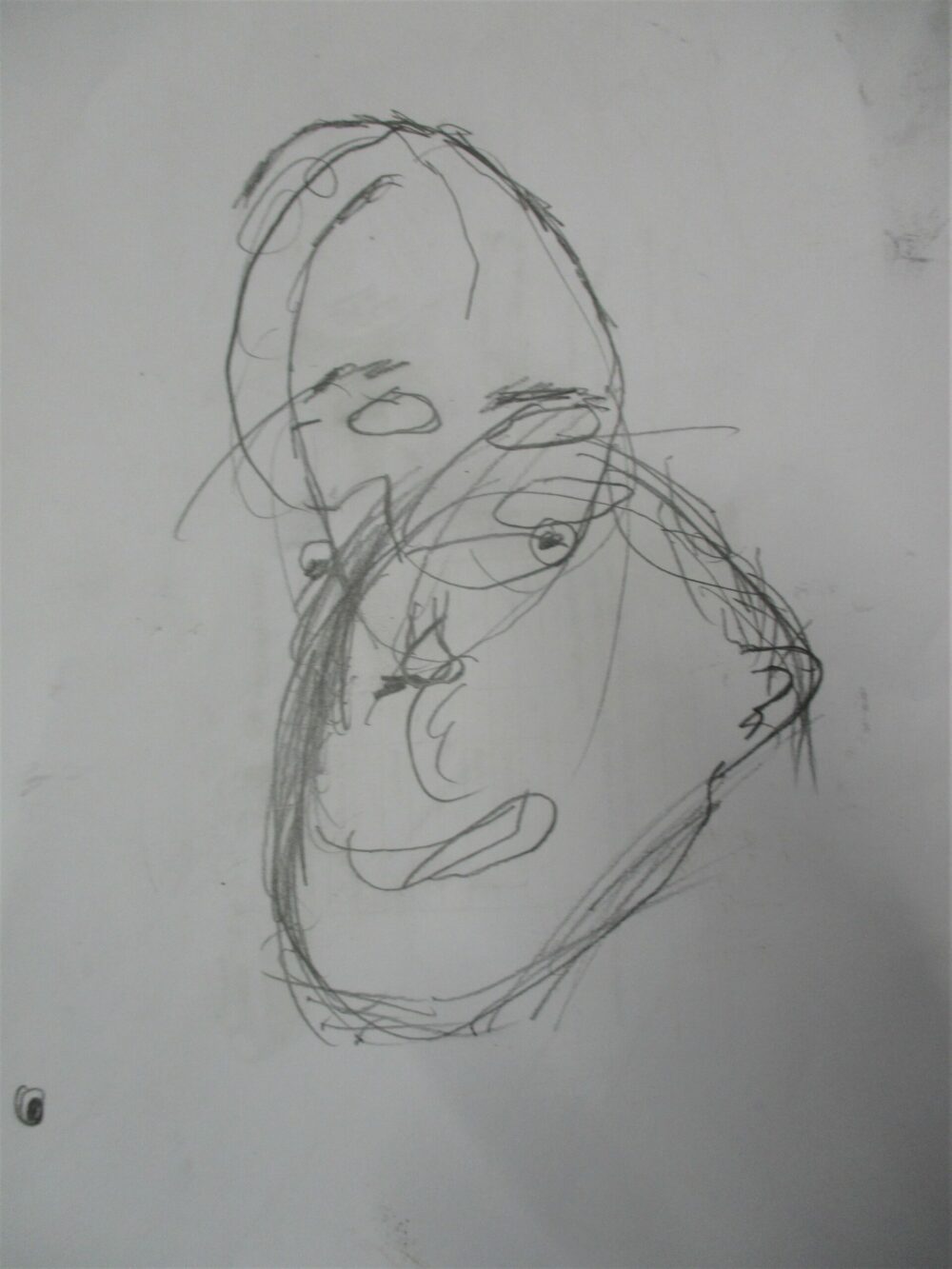
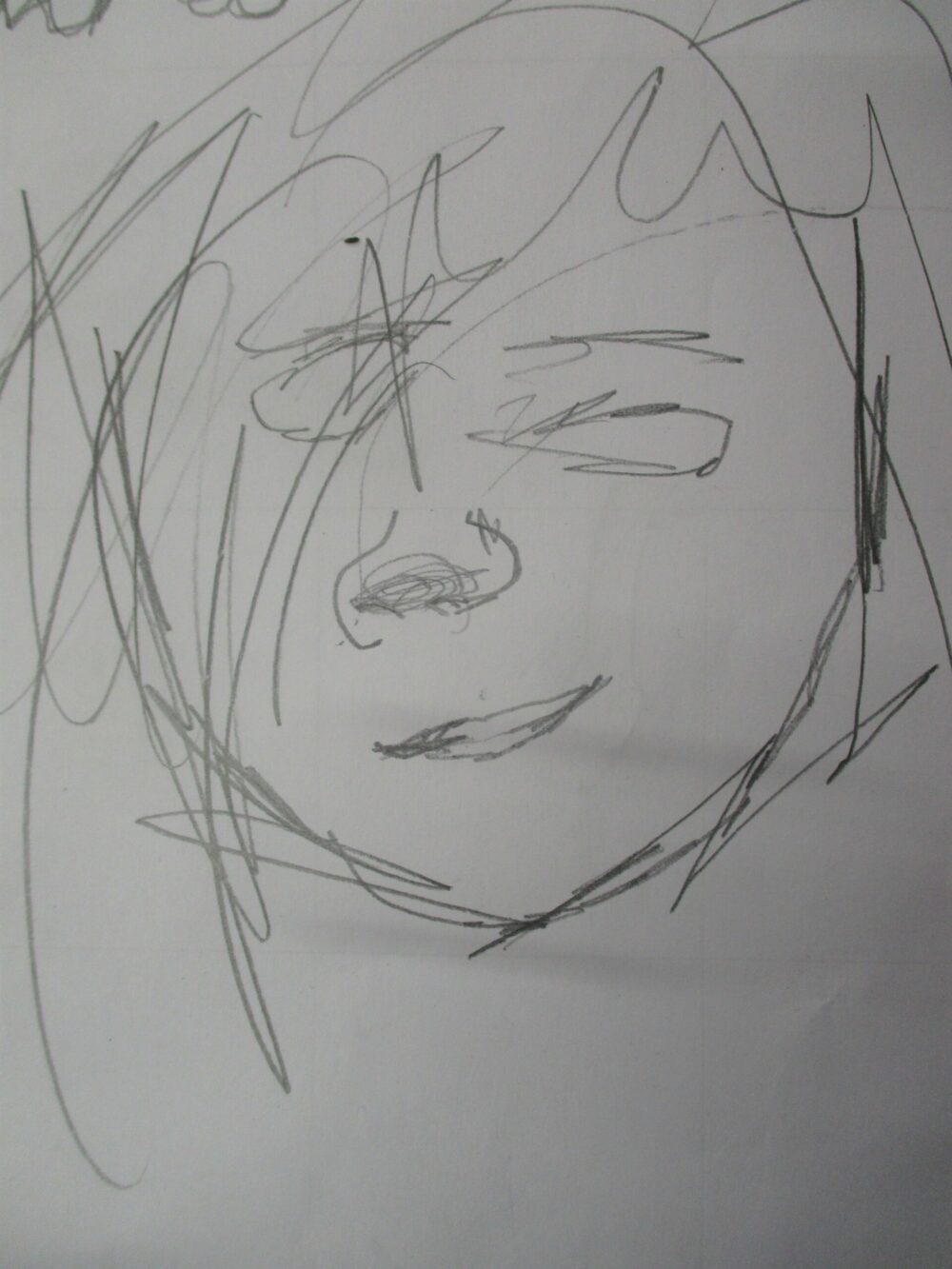
A video of this activity in action can be found here.
Starter Discussion:
At the beginning of the play, Macbeth is seen as a loyal, courageous fighter. He and Banquo have returned victorious from battle against the Thane of Cawdor and the Norwegians. Do you think Macbeth is courageous? Why?
What or who do Macbeth’s first words in Act 1 Scene 3 remind us of?
‘So foul and fair a day I have not seen’
(Act 1 Scene 3)
This line touches on the theme of disorder. What is foul (battle) is also fair (victory).
Remember the words spoken by the witches earlier? (‘Fair is foul, and foul is fair:
Hover through the fog and filthy air’). Does this connection between Macbeth and the witches make us feel a certain way about him? Why do you think Shakespeare did this?
If we know Macbeth is a courageous fighter, not afraid of a battle and that he is intrigued by the witches (rather than disgusted by them as Banquo is) – how might he react to the following words spoken by them in Act 1 Scene 3?
‘All hail, Macbeth! hail to thee,
Thane of Glamis!
All hail, Macbeth! hail to thee,
Thane of Cawdor!
All hail, Macbeth! that shalt be
King hereafter!’
(Act 1 Scene 3)
When Duncan rewards Macbeth by making him the new Thane of Cawdor, the first line of the witch’s prophecy has come true. What might Macbeth think comes next?
Context:
In Shakespeare’s time most people believed in the Divine Rights of Kings. Kings were thought to be appointed by God to preserve and protect society and to make sure social hierarchies were kept in place. By murdering King Duncan, Macbeth’s actions would have been seen by Shakespeare’s audience as a crime against God.
Likewise, Macbeth’s ambition to be King would have been seen as deeply shocking and an attack on the stability of the social order.
Main Activity: Macbeth Portraits
How can we show ‘brave Macbeth’ through figurative drawing?
We’re going to draw portrait of Macbeth – with a focus on how posture can be used to communicate character. We’ll follow this up with portraits of the witches.
Before we partner up, we’re going to practice our best Macbeth postures. Imagine you are Macbeth, returning valiant from battle. How would you stand, how would you hold your heard, or walk?
In character, how do you feel when you hear the following words:
‘All hail, Macbeth! hail to thee,
Thane of Glamis!
All hail, Macbeth! hail to thee,
Thane of Cawdor!
All hail, Macbeth! that shalt be
King hereafter!’
Partner up! Take it in turns to be Macbeth. Stand in your chosen pose while your partner draws you. Use the techniques learned in the warm up to engage you with careful looking at your subject.
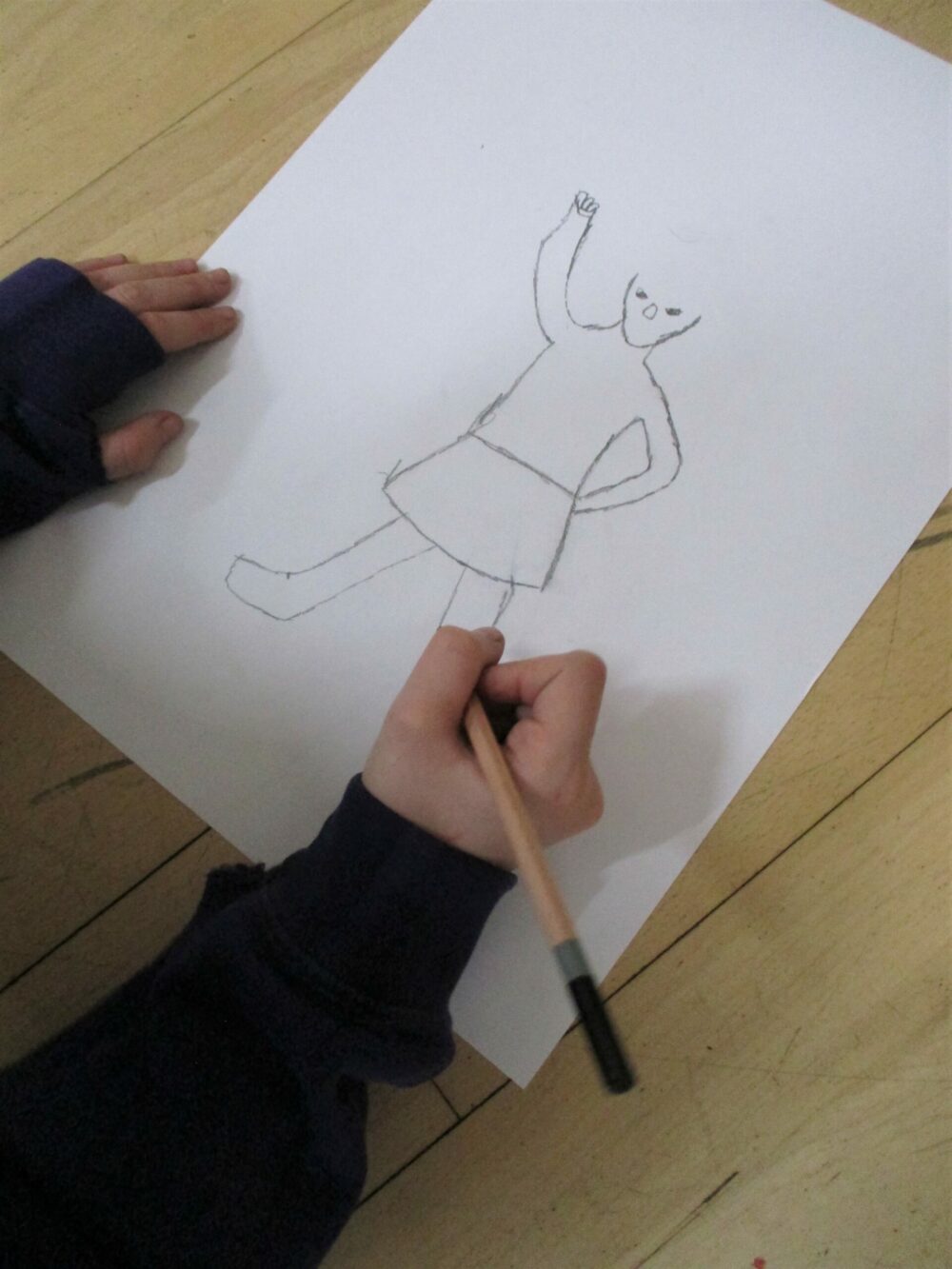
Try not to get caught up with details as soon as your pencil hits the paper. Begin by looking, then gently marking out the basic form of the figure. Move around fluidly and try and use the full height of the paper.
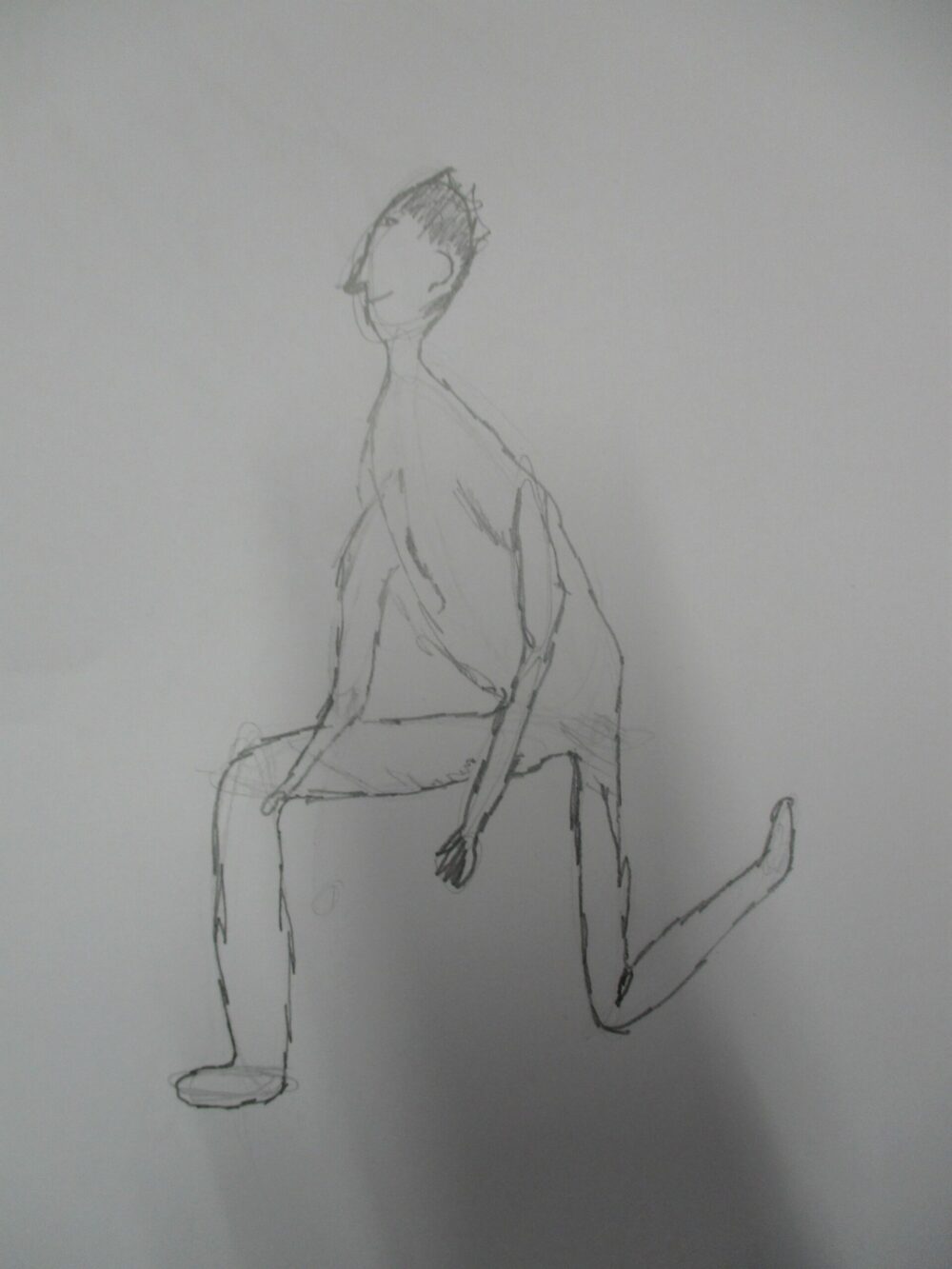
Thinking about how you used fabric in session 2, can you imagine how Macbeth’s cloak or other clothing might fall about his body?
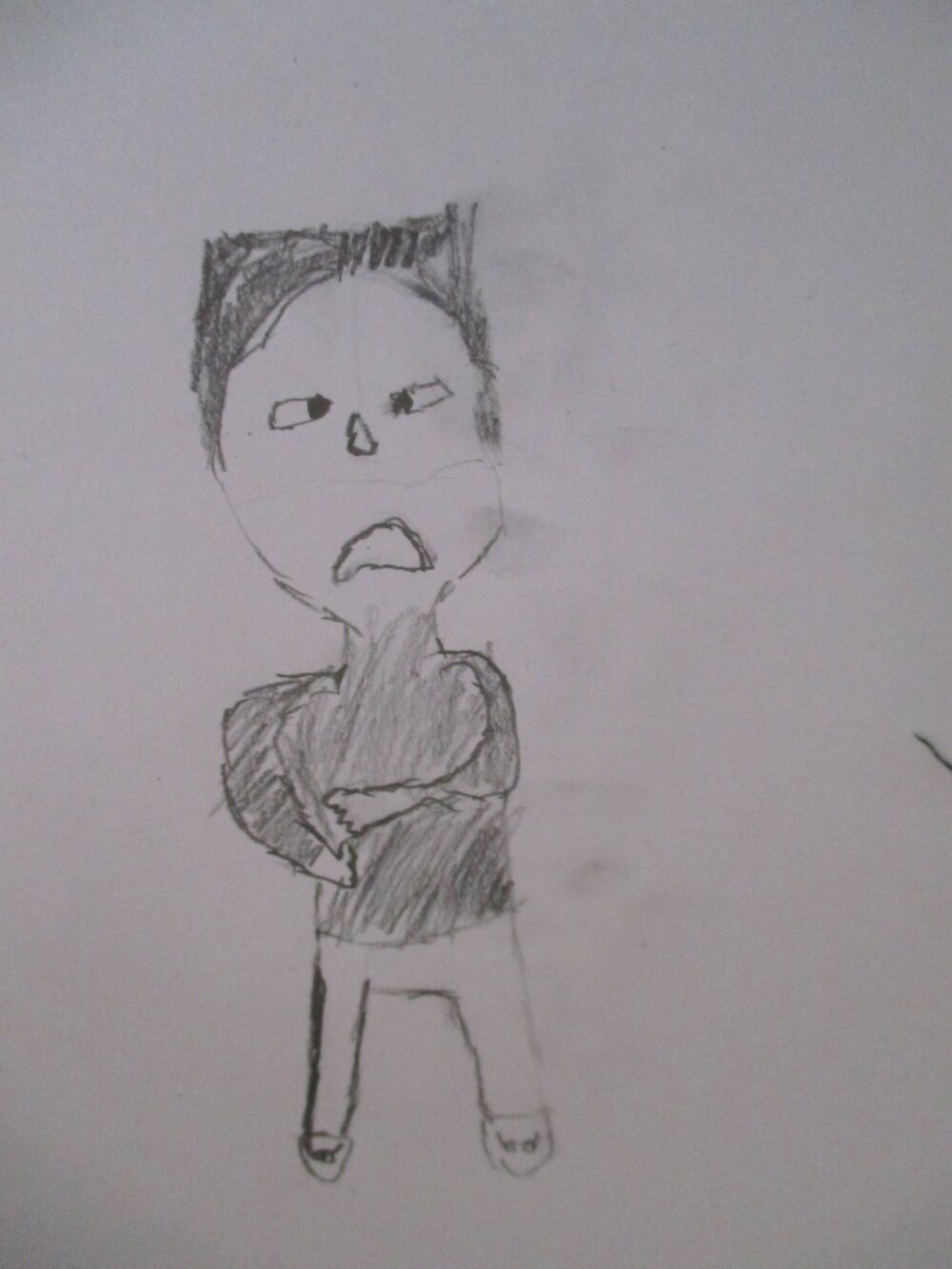
As you channel your inner Macbeth think how might he be holding his head, where his arms fall, where is he looking?
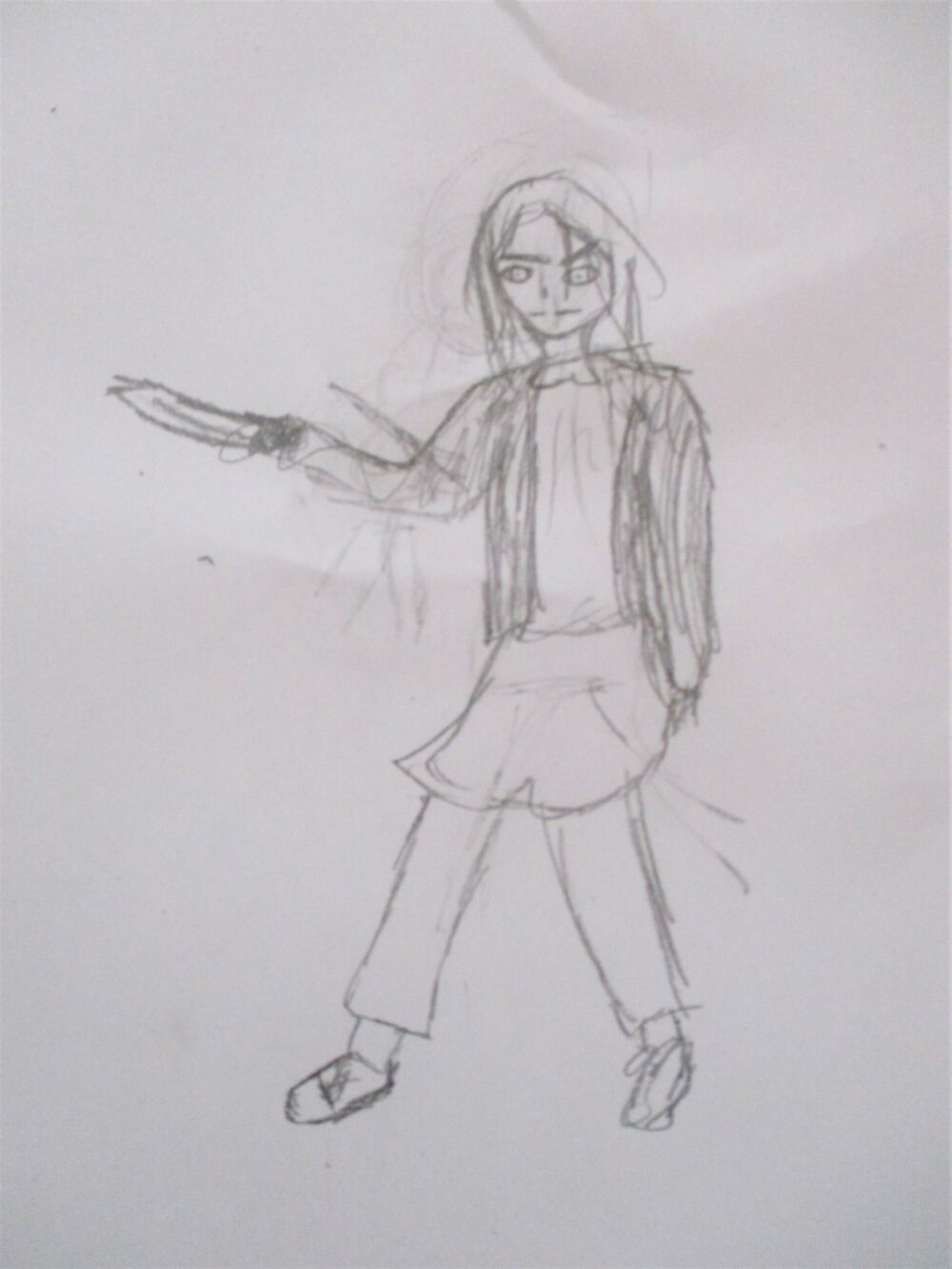
Swap round when you have drawn for about 10 minutes.
Next – it’s time to channel your inner witch! Find your capes from session 2 and take it in turns to assume your best withered witch pose. Draw your Witch portrait next to your portrait of Macbeth.
Perhaps your Witch is reaching out towards Macbeth with a withered finger….
Once you have had a chance at drawing and modeling, continue working on your portraits, adding detail or colour, or a background. Develop your drawing how you wish and if you don’t get time to finish, try and continue with it at another time.
Reflection:
Pin your drawings up on the wall or hold them up. What do you notice about your two different portraits? What can we learn about their characters from them?
Can you recap the key character traits of Macbeth and the witches?
What did you find most challenging about drawing from life? Did you prefer being the portrait artist or posing as the characters? Why?
Move onto session 4 here.

